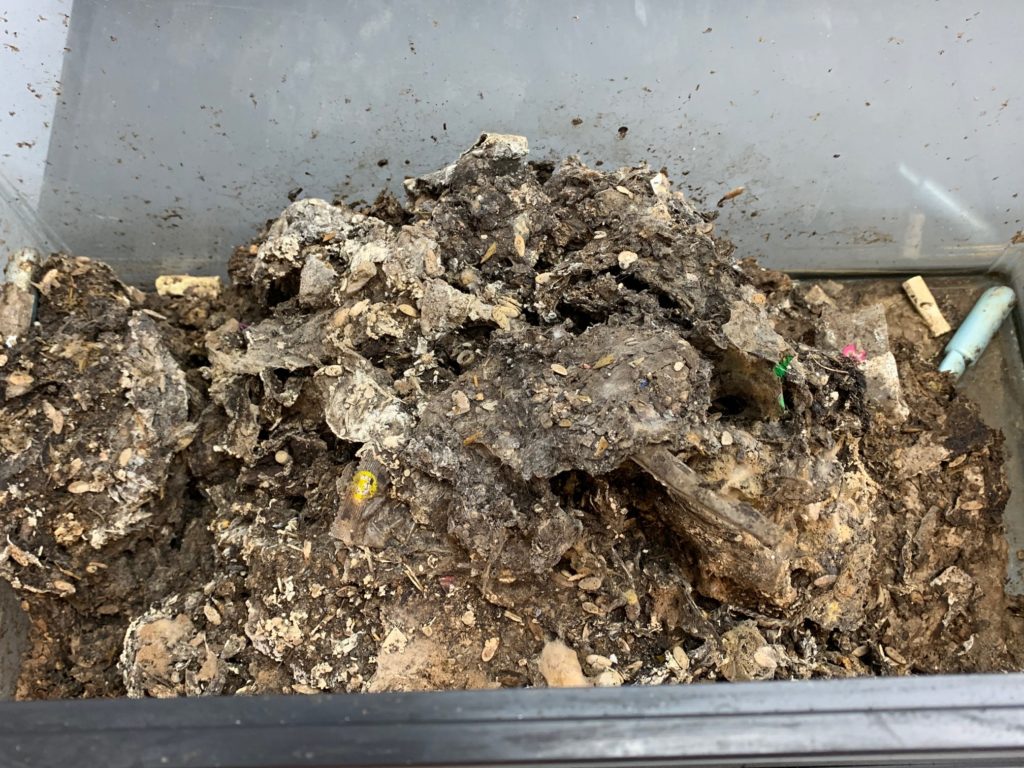DETROIT – Worldwide, the occurrence of large-scale sewer blockages caused by the massive buildup of discarded fats, oils and greases (FOGs) is on the rise. The problem is getting more severe as solid waste products such as paper towels, sanitary products and wipes are flushed down toilets. The combination of FOGs with the waste paper products can be dangerous and environmentally caustic. Often, these blockages are caused by people improperly disposing of these items in homes, restaurants, and in various industries and businesses.
These buildups have been termed “fatbergs,” and their environmental impact is severe. Their accumulations have a high potential to pose a significant health risk and can create sewer blockages that cause great damage.
A team of Wayne State University researchers led by Carol Miller, Ph.D., professor of civil and environmental engineering, and Tracie Baker, DVM, Ph.D., assistant professor in the Institute of Environmental Health Sciences, is collaborating to better understand the physical, chemical and biological character of these fatbergs through real-time video, in-line sensor data and advanced physio-chemical analysis of the blockages.
“Our study will help identify contaminants of interest in fatbergs by extracting and evaluating the concentrations of emerging contaminants including pesticides, pharmaceuticals, personal care products and plastics,” said Baker. “These results can be helpful in identifying potential risks associated with blockages and inform targeted prevention and mitigation efforts.”
Miller and Baker’s team is evaluating the massive fatberg that occurred in a major wastewater interceptor pipe in Macomb County, Michigan — one of the largest blockages in the county. When the blockage occurred, millions of gallons of untreated sewage were nearly discharged into the nearby Clinton River in order to avoid severe basement flooding throughout the area. Raw sewage releases — whether to basements or rivers — threaten environmental and human health in the region.
“Our work in the laboratory will lead to new information about the chemistry and hydraulic characteristics of fatbergs, and the environmental considerations associated with their growth,” said Miller. “And our important work of educating the public can begin to help stop these human-sourced blockages that have had — and will continue to have — a severe impact on our environment.”
Miller and Baker are working with the Michigan Science Center to design an educational centerpiece about the occurrences of fatberg blockages and actions the public can adopt to mitigate the occurrence.
“Educating the public is absolutely critical to help promote safe behavior for waste disposal,” said Miller. “What we put down our drains and toilets can and does have a great impact on our sewer and water systems. Everyone needs to think about the impact they are having with what they dispose down drains in their homes, restaurants and beyond, and be a part of the solution by changing how they dispose of grease, wipes and other products. Even items that claim they are biodegradable or flushable do not break down in sewers and are a part of the fatberg problem.”
The fatberg educational exhibit is slated to open in October at the Michigan Science Center in Detroit. Miller and Baker said they aim to review the success of this public education program on making an impact in reducing fatberg materials in our sewer systems.
“Educating the public on the dangers of improper disposal of FOGs and other solid waste products is critical,” said Miller. “It is our hopes that this exhibit is just the beginning of helping to inform the public on their role in alleviating fatbergs.”
The study, Rapid: Response to Massive Sewer Blockage for Immediate Flood Mitigation and Future Remedies, was funded by a grant from the National Science Foundation to Wayne State University (award # 1903329). The one-year grant totaled $86,000 which includes an REU supplement to allow undergraduate researchers to participate in the project.
###
Wayne State University is one of the nation’s pre-eminent public research universities in an urban setting. Through its multidisciplinary approach to research and education, and its ongoing collaboration with government, industry and other institutions, the university seeks to enhance economic growth and improve the quality of life in the city of Detroit, state of Michigan and throughout the world. For more information about research at Wayne State University, visit http://www.research.wayne.edu.
Original post https://alertarticles.info
